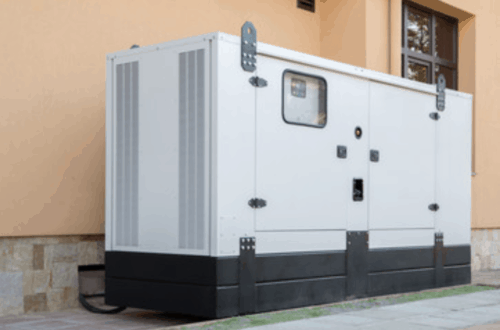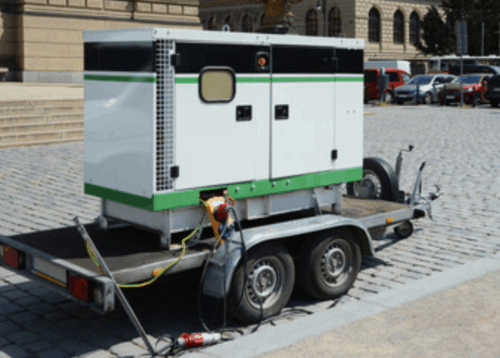If not correctly addressed, power generators may become a significant source of harmful and distracting noise. Between the sound of the diesel or gas engine, cooling fans, turbo whine, and exhaust breakout, the amount of noise emitted by power generating equipment can be extreme. Without mitigation, high levels of sound and vibration eventually cause damage to equipment and result in injuries to personnel in the form of direct hearing damage and indirect accidents caused by miscommunication.
Understanding how to reduce generator noise requires a thorough comprehension of sound waves and how they behave. For more than 40 years, Technicon Acoustics has been a premier provider of noise control solutions for portable and standby power generators, including:
- Gensets
- Portable generators
- Standby generators
- Inverter generators
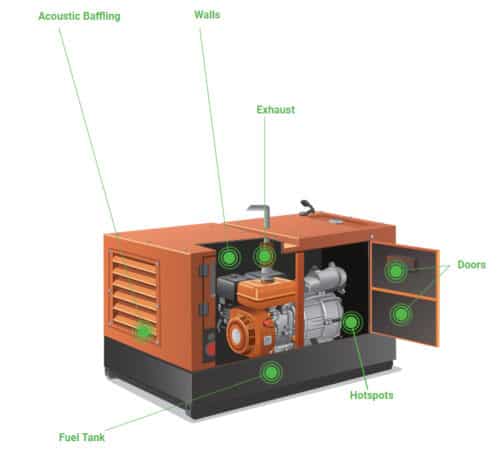
Acoustic Baffling
Technicon Acoustics can also assist with already designed and existing power generator and air compressor enclosures with noise problems. We can create a compressed fiber acoustic baffle that will redirect the line of sight and airflow for the noise, making it difficult for it to escape. This is a perfect after-the-fact fix customized to your needs!
Fuel Tanks
- Vibration Damping
The fuel tank is often found at the base of the skid-mounted power generator and air compressor enclosure. As the fuel burns off, it creates more air space in the tank leading to an increase in resonance – the source of audible noise. Applying vibration damping materials between the fuel tank and the enclosure can prevent that occurrence.
- Thermal Solutions
If your fuel tanks under enclosures are made of plastic, it can be more vulnerable to heat-related damage. Not to worry! In addition to a vibration damping solution, this application can use our Tech Shield™ between the heat source and fuel tank for thermal protection up to 1000ºF.
Hotspots
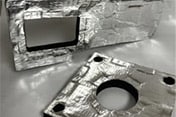
There are many hotspots found within an enclosure which need to be accounted for to protect sensitive components, electronics, computer equipment, and engine parts. In addition to the internal protection, hotspots also touch outside the unit. Our Tech Shield™ can be installed anywhere in an enclosure to ensure surface temperatures are reduced as well.
Walls
- Acoustic Solutions
Walls of an enclosure can be lined with acoustic absorber foam or our PF-091 fiber. These materials are used to prevent sound waves from reflecting off hard surfaces and traveling out of it. As a result, these enclosures are much more effective in reducing noise. An enclosure without proper acoustical treatments could be counter-intuitive!
- Vibration Damping
In addition to the acoustic solutions, we also are able to add vibration damping to the composite for an all-in-one solution. This reduces both noise and vibration resonance coming from the equipment.
Exhaust
In an enclosure, an exhaust pipe stems from the engine and is present on the inside and outside. Here, wrapping it with our Tech Shield Sleeve™ is recommended to keep the exhaust pipe hot and to protect internal components. This is one of the main radiators of heat in an enclosure, so it’s important to insulate it from the source. Our Tech Shield Sleeve™ product can be customized and easily installed for any pipe diameter, bend, or length.
Doors
- Acoustic Solutions
Doors of an enclosure for power generators and air compressors take up significant surface area. This makes it important to treat it with acoustic material, such as our acoustic absorber foam or PF-091 fiber.
- Thermal Solutions
UL standards require a power generator or an air compressor enclosure to stay below a threshold of surface temperature. This can only be done with proper thermal treatments. We have the expertise to help you comply with these regulations while reducing unwanted noise simultaneously.
Acoustic material placed on the door can often be parallel to a hot exhaust pipe. In this case, we recommend reducing the composite’s material thickness to make room for our Tech Shield™ product within to help block heat. With Technicon, you don’t have to compromise your acoustic solutions for thermal ones – they can coexist!
For more detail to these specific solutions, check out the below infographic and click each section for more information!
You May Also Like: Acoustic Solutions to Portable and Standby Power Generators
Technicon has the technology and experience you need to reduce your power generator noise.
Types of Power Generator Noise to Reduce
Determining the way that sound and vibration travel from a generator allows experts to choose the best options for noise mitigation. Noise from generator equipment is typically classified as structure-borne or airborne, depending on the way it is transmitted.
Structure-Borne Noise
Structure-borne sound consists of vibrations transmitted from the generator to the surrounding area. As they travel through solid material, these vibrations create audible levels of noise that can be harmful and distracting. To reduce structure-borne noise, experts will typically apply damping materials around the generator equipment to reduce and withstand vibration.
Airborne Noise
Airborne noise, as the name implies, consists of sound waves generated through vibration that travel through the air. Generator noise reduction enclosures are an excellent way to reduce the amount of airborne noise emitted by power generation equipment, but there is more to it.
In an enclosure, acoustical absorbers and barriers line the interior to prevent line-of-sight noise transmission via straight air paths. All doors and access panels in a noise reduction enclosure are adequately sealed and fitted with gaskets to prevent leakage, as even a 10% untreated surface area can reduce sound treatment effectiveness by up to 50%. Specially engineered power generation equipment can also reduce unwanted noise through the installation of adequate seals and redirection of airflow to dissipate sound.
How Technicon Acoustics Can Help You Reduce Generator Noise
Technicon offers a range of acoustic solutions to reduce the sound and vibration noise produced by power generation equipment. Our extensive selection of acoustic products includes acoustic absorbers, acoustic barriers, and a variety of vibration damping materials.
Acoustic Absorbers
Acoustic absorbers are materials specifically designed to absorb sound waves, thereby reducing noise and vibration within the engine enclosure. Technicon’s acoustic absorbers consist of foam or fiber-based materials used to line the solid, sound-reflective surfaces inside the engine enclosure. Our absorbers are available in a wide range of thicknesses and facings specifically tailored to meet the needs of the intended application.
Acoustic Barriers
Acoustic barriers block airborne sound by preventing the transmission of acoustic vibration. They are typically composed of mass-loaded vinyl (MLV), a heavy, dense material that effectively prevents sound waves from traveling from one location to another. Acoustic barriers are often used in conjunction with acoustic absorbers to provide thorough soundproofing. Acoustic absorber/barrier composites are also available to simultaneously absorb and block the transmission of sound.
Vibration Damping Material
Vibration damping materials operate on a different principle from absorbers or barriers. Rather than deflecting or absorbing the excess energy expressed in sound vibration, vibration-damping material changes the resonant frequency of sound and converts it to heat. Commonly used vibration damping materials include rubber, polyvinyl chloride (PVC), and polyurethane. Damping materials help to eliminate noise problems by preventing unwanted vibrations from entering the surrounding environment in the form of either structural or airborne noise.
Importance of Industrial Noise Control
When using a standby generator at a worksite, users must often consider the effect of their equipment on the surrounding area. Untreated noise from generators can cause disturbances in nearby residential areas, businesses, schools, and more. Some municipalities have even established sound level restrictions to mitigate noise levels. As a result, manufacturing a quieter and less disruptive generator becomes increasingly more valuable to consumers.
You May Also Like: The Importance of Acoustic Enclosure Treatments
Loud generators may also create dangerous conditions for on-site workers. Excessive noise and vibration can be distracting and might prevent nearby workers from hearing instructions or warnings. Miscommunication and inattention can lead to expensive errors and severe worker injuries. Prolonged exposure to high noise levels can also permanently damage the hearing of workers.
Avoiding the potential for disruption and injury requires a quality noise control system to reduce, control, or eliminate the noise from your power generation system.
Control Power Generation Equipment Noise With Technicon Acoustics
For more than 40 years, Technicon has been helping OEMs find workable acoustic solutions for even the most complicated circumstances. We offer cost-effective solutions that will enhance worker safety, improve your relationship with the community, and boost your perceived service value.
To see how Technicon Acoustics can help with your facility noise, contact us today.
To enable screen reader support, press Ctrl+Alt+Z To learn about keyboard shortcuts, press Ctrl+slash
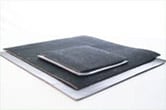 The fuel tank is often found at the base of the skid-mounted power generator and air compressor enclosure. As the fuel burns off, it creates more air space in the tank leading to an increase in resonance – the source of audible noise. Applying
The fuel tank is often found at the base of the skid-mounted power generator and air compressor enclosure. As the fuel burns off, it creates more air space in the tank leading to an increase in resonance – the source of audible noise. Applying 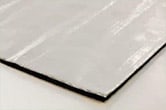 If your fuel tanks under enclosures are made of plastic, it can be more vulnerable to heat-related damage. Not to worry! In addition to a vibration damping solution, this application can use our
If your fuel tanks under enclosures are made of plastic, it can be more vulnerable to heat-related damage. Not to worry! In addition to a vibration damping solution, this application can use our 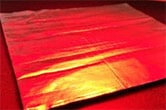
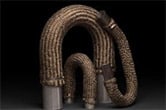
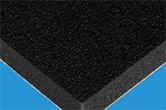
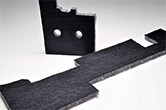 Doors of an enclosure for power generators and air compressors take up significant surface area. This makes it important to treat it with acoustic material, such as our acoustic absorber foam or PF-091 fiber.
Doors of an enclosure for power generators and air compressors take up significant surface area. This makes it important to treat it with acoustic material, such as our acoustic absorber foam or PF-091 fiber.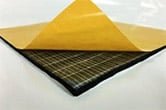 UL standards require a power generator or an air compressor enclosure to stay below a threshold of surface temperature. This can only be done with proper thermal treatments. We have the expertise to help you comply with these regulations while reducing unwanted noise simultaneously.
UL standards require a power generator or an air compressor enclosure to stay below a threshold of surface temperature. This can only be done with proper thermal treatments. We have the expertise to help you comply with these regulations while reducing unwanted noise simultaneously.
